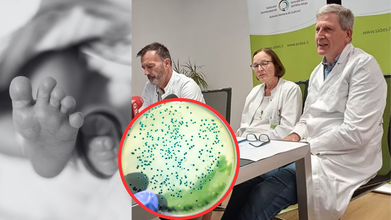- Health Conditions A-Z
- Health & Wellness
- Nutrition
- Fitness
- Health News
- Ayurveda
- Videos
- Medicine A-Z
- Parenting
- Web Stories
Unexpected Type 2 Diabetes 'Cure' Found In The Brain, Could This Be The Link In Treatment?

For years, type 2 diabetes has been viewed as a metabolic disorder rooted in lifestyle habits, obesity, and insulin resistance. But a new study, released in the Journal of Clinical Investigation, is challenging that underlying wisdom. In a stunning reversal, researchers have discovered that certain neurons in the brain specifically Agouti-related peptide (AgRP) neurons in the hypothalamus could play an important role in the onset and resolution of type 2 diabetes.
This finding opens the door to an innovative treatment strategy- conditioning the brain to control blood sugar levels, perhaps without changing weight or food consumption. It's a breakthrough that can reimagine how the global medical community treats this chronic illness that plagues more than 400 million people around the world.
Up to this point, the brain was not thought to play a central role in type 2 diabetes pathology. However, investigators at UW Medicine have demonstrated that a hyperactive population of neurons, AgRP neurons found in the arcuate nucleus of the hypothalamus disproportionately contribute to driving hyperglycemia (elevated blood glucose).
Dr. Michael Schwartz, lead author on the study and a leading endocrinologist at the University of Washington, said, "These neurons are having an outsized impact in hyperglycemia and type 2 diabetes." His researchers silenced the talking capability of AgRP neurons with viral genetics—namely, they introduced tetanus toxin to keep these neurons from talking to nearby cells. The findings were nothing short of revolutionary: blood glucose levels normalized for months in diabetic mice, even without adjustments in body weight or food consumption.
This finding contradicts the long-held dogma that weight gain and insulin resistance are the central causes of type 2 diabetes. Lifestyle and genetics are still major players, of course, but the brain's regulatory role in glucose metabolism is also proving to be a major if not central component of the puzzle.
The scientists observed additional modifications in the mice after AgRP neuron repression:
- Lower plasma insulin levels, indicating higher insulin sensitivity
- Higher liver glycogen, reflecting more effective glucose storage
- Lower corticosterone (mouse equivalent of cortisol), which could indicate reduced physiological stress
- Higher lactate levels, potentially increasing hepatic glucose uptake
These indicators as a whole indicate systemic restoration of glucose metabolism—initiated not by a pancreas-directed or weight-loss intervention, but by a brain-mediated one.
How This Research Relates to Ozempic?
Surprisingly, today's diabetes medications such as GLP-1 receptor agonists like the blockbuster medications Ozempic and Wegovy—are also known to suppress AgRP neurons. Dr. Schwartz theorizes that these brain-targeting actions may be a partial explanation for their glucose-lowering effects, independent of their well-characterized effect on weight loss.
The degree to which this effect underlies the antidiabetic action of these drugs is unknown," Schwartz said. But the link raises tantalizing possibilities: might stimulating or duplicating this brain suppression be a new, more effective route to remission from diabetes?
What Implications It Has For Humans?
Although models in animals are not always a good predictor of human outcomes, the repeatability across several mouse studies is encouraging. An earlier study by Schwartz's group had demonstrated that infusing the brain peptide FGF1 directly into the hypothalamus also resulted in diabetes remission—a response that was again linked to the suppression of AgRP neuron activity.
If the same mechanisms exist in humans, neuromodulation or precision-targeted drugs that quiet particular brain circuits could be future treatment—potentially presenting a backup for patients who have difficulty with lifestyle interventions or develop drug resistance.
Is Brain-Targeted Diabetes Therapies the New Treatment?
There are more questions than answers. Why do AgRP neurons get hyperactive in the first place? Can their activity be selectively and safely reduced in human beings? And could this be achieved without impacting other vital functions of the brain?
Dr. Schwartz points out that the study breaks with conventional thinking on diabetes and requires further investigation into the neurobiology of metabolic illness. "This could be a paradigm shift in how we approach and treat type 2 diabetes," he says.
The long-term aim is to translate this brain-based strategy from the bench to the bedside. Successful, it could not only transform diabetes care—it could also lead to greater interest in how the brain controls whole-body metabolism, with the potential for breakthroughs for other diseases linked to metabolic dysregulation.
With millions living with type 2 diabetes globally, the potential of a brain-based treatment framework is staggering. Learning that a few thousand neurons have the power to control blood sugar levels separate from weight loss may change the way the disease is treated, possibly putting an end to the suffering of patients who have long been battling traditional treatments.
As science continues to advance, the neurobiology of metabolism could become the new frontier in international diabetes management. The mind-body connection, it seems, might be more literal and potent than we ever envisioned.
Nasal Spray That 'Works In Hours' May Replace Pills For Depression Treatment

Credits: Canva
A breakthrough study finds esketamine nasal spray may deliver meaningful improvement for treatment-resistant depression within hours. For decades, patients struggling with major depressive disorder (MDD) have had to wait weeks sometimes months for antidepressant medications to show effects. For roughly one in three people, even after trying multiple drugs, relief never comes. This group, known as treatment-resistant depression (TRD), faces limited and often frustrating options.
Now, a new clinical trial suggests there may be another path, esketamine nasal spray. Researchers report that when used as a standalone treatment, esketamine provided rapid and sustained relief for adults with TRD. Unlike traditional antidepressants that take weeks to work, improvements appeared within 24 hours and lasted throughout the study’s four-week duration. The findings were published in JAMA Psychiatry.
Ketamine, a compound first approved in the 1970s as an anesthetic, has drawn increasing attention for its antidepressant effects at lower doses. Esketamine, a chemically refined version, works on similar pathways but is more targeted.
In 2019, the U.S. Food and Drug Administration approved SPRAVATO, an esketamine nasal spray, for use alongside oral antidepressants in TRD. Until now, it was unclear whether the spray could stand on its own. This new phase 4 trial offers the strongest evidence yet that esketamine may be effective without an added oral drug.
The study enrolled 378 adults across 51 U.S. outpatient centers between 2020 and 2024. To qualify, participants had to show a history of poor response—defined as less than 25% improvement—to at least two antidepressants during their current depressive episode.
Key features of the trial included:
Design: randomized, double-blind, placebo-controlled
Groups: fixed doses of either 56 mg or 84 mg esketamine, or a placebo spray
Treatment schedule: twice-weekly dosing for four weeks
Primary measure: changes in Montgomery-Åsberg Depression Rating Scale (MADRS) scores, which capture depression severity
Most participants were women (61%), and the average age was 45. All entered the study with moderate-to-severe depression.
How Esketamine Nasal Spray Works?
Within a single day of treatment, both esketamine groups reported noticeable improvements compared to placebo. By day 28, those on 56 mg showed a 5.1-point greater reduction in symptom scores versus placebo.
The 84 mg group had an even stronger effect, with a 6.8-point advantage. For perspective, traditional antidepressants often take six to eight weeks to yield measurable changes. Esketamine’s speed is one of the factors making it so promising for TRD patients, many of whom live with intense, persistent distress.
Patients who continued into the optional 12-week open-label phase—where all participants received esketamine—maintained or further improved their scores. This suggests the drug’s benefits may extend beyond the initial four weeks.
The “number needed to treat,” a measure of clinical significance, was around 6–7 for symptom response. This means that for every six or seven patients treated, at least one more experienced a meaningful reduction in depression compared to placebo. For a psychiatric intervention, that is a robust effect size.
Are There Any Side Effects of the Nasal Spray?
Like other ketamine-based therapies, esketamine is not without side effects. In this trial, the most common were nausea, dizziness, headache, and dissociation, a temporary feeling of detachment from one’s surroundings.
Importantly, these effects were short-lived, generally resolving within hours of dosing. Safety monitoring also showed no increase in suicidal thinking compared to placebo, an encouraging finding in depression research. No treatment-related deaths were reported.
Still, the psychoactive nature of the drug meant some participants could guess whether they had received esketamine or placebo, a limitation that researchers acknowledged.
For the estimated 280 million people worldwide living with major depressive disorder, and especially the one-third who don’t respond to conventional drugs, esketamine represents a potential paradigm shift.
Traditional antidepressants work by altering serotonin, norepinephrine, or dopamine. Esketamine instead targets the glutamate system, offering a novel mechanism of action. That difference matters- before SPRAVATO, psychiatry hadn’t seen a new treatment pathway in over 30 years.
Adam Janik, medical director at Johnson & Johnson and lead author of the study, emphasized the scale of the problem: “The size and scope of the global depression epidemic is staggering. Significant unmet needs remain for these patients.”
While the findings are promising, experts caution against premature conclusions. The trial population was not racially diverse, and individuals with certain psychiatric conditions were excluded. That raises questions about how well the results will apply across broader patient groups.
For decades, patients with treatment-resistant depression have cycled through medications, therapies, and hospitalizations, often with little relief. This study adds weight to a growing body of evidence that esketamine could break that cycle. While it is not a cure, the possibility of meaningful relief within hours rather than weeks could be life-changing for millions.
Two Premature Infants Die From Infection In Italy Hospital Over Suspected Soap Dish Contamination

Credits: Canva/ South Tyrolean Health Service
Two of the premature infants, each weighing under two pounds, succumbed within days of one another at San Maurizio Hospital in Bolzano, Italy. The probable cause: Serratia marcescens, a bacterium traced to detergent dispensers used to wash baby bottles and teats in the neonatal intensive care unit (NICU).
The two premature infants, born at 23 and 27 weeks of gestation, died from overwhelming sepsis on August 12 and 13. Both deaths have raised serious questions about the hospital's infection control and hygiene practices, as well as the exceptional vulnerability of premature infants.
Italy's National Anti-Corruption and Prevention Agency (NAS) is spearheading the investigation into how a kitchen staple—dishwashing detergent—was used as a lethal vector. Preliminary tests isolated Serratia marcescens in the spout and dispensers utilized for the soap reservoir in the NICU. Authorities are investigating several alternatives:
- The detergent could have been contaminated during transport to the hospital.
- Improper storage or handling could have provided an environment for bacteria to flourish.
- An infected person may have transferred the pathogen through contact with the dispenser.
The route of contamination is uncertain until laboratory tests are done.
What Is Serratia marcescens?
Serratia marcescens is no stranger to hospitals. The bacteria exist best in damp surroundings—sinks, soap dispensers, catheters—and though usually harmless to healthy patients, are deadly to those with weakened immune systems. For preemies, whose immune systems are still developing, contact can rapidly degenerate into sepsis, pneumonia, or meningitis.
Hospital administrator Pierpaolo Bertoli emphasized that the germ itself was not novel. "The bacterium's presence is not singular because it is always a threat to neonatal intensive care units," he stated. The threat, he continued, is in the immense vulnerability of NICU patients.
Immediate Response and Precautionary Measures
After the discovery, a recall of all soap from the Bolzano hospital system was ordered, and admission of no more high-risk premature infants is taking place until notice. Existing cases are being routed to hospitals in Trento, about 40 miles away.
The hospital has even transferred the 10 remaining NICU babies to a different wing as a precautionary step. The hospital's medical director, Dr. Monika Zaebisch, confirmed that proper hygiene procedures were in effect but accepted the tragedy. "Unfortunately, these two cases could not be prevented," she stated.
Why Premature Babies Are Susceptible To Deadly Infections
Prematurity, or delivery prior to 37 weeks, leaves babies with a poorly developed immune system. Under normal circumstances, transfer of protective antibodies from the mother through the placenta in the third trimester supplies babies with at least partial immunity at birth. In preemies, that all-important exchange is incomplete—or nonexistent.
This absence of maternal immunity, coupled with medical interventions like catheters, ventilators, and feeding tubes, provides an entry point for bacteria such as Serratia marcescens. Infections that would be contained within older children or adults—such as bloodstream infections, pneumonia, or meningitis—can develop quickly and be life-threatening in preterm infants.
The Bolzano tragedy is no lone wolf. Hospitals around the globe have experienced outbreaks attributed to contaminated medical devices, water supply lines, and cleaning solutions. Even slight breaches of sterilization procedures can snowball into fatal infections in vulnerable wards such as NICUs.
Dr. Josef Widmann, director of medicine for the South Tyrolean Health Authority, recognized the systemwide problem. "This is not merely one product issue," he told a press briefing. "It is a reminder that NICUs remain under constant risk of microbial exposure.
The incident comes on the heels of another Italian public health crisis: a botulism outbreak from a food vendor in southwest Italy that resulted in two deaths and sent 14 to the hospital. Combined, the incidents highlighted systemic weaknesses in food and health safety regulation.
The Public Prosecutor of Bolzano is contemplating autopsies on the infants, which would determine whether charges of malpractice were appropriate. Relatives and health advocates are demanding answers, both to pay respects to those who died and to guarantee system change.
In the meantime, NAS researchers persist in testing the recalled detergent, dispenser units, and environmental swabs from the NICU. Identification of where the contamination took place, at the production facility, in storage, or within the hospital system itself, is important not only for legal accountability but also for avoiding future such outbreaks.
World’s First Pregnancy Robots: Will Women Soon Be Able to Use Surrogate Robots?

(Credit - Heathandme)
While technology has long assisted in the birthing process, researchers at Kaiwa Technology, China are now taking it a step further by creating artificial wombs that can be placed inside a robot. According to Dr Zhang Qifeng, who is leading the project, the technology for artificial wombs is already significantly advanced, and the team aims to demonstrate a working prototype as early as next year.
The robot is expected to ‘become’ pregnant and carry a baby to full term in an environment filled with artificial amniotic fluid, designed to mimic the natural conditions of a human womb. Although the exact process of fertilization has not yet been disclosed, the project is being described as a potential game-changer for people who cannot conceive naturally or are unable to carry a pregnancy to term.
Ethical Concerns And Unanswered Questions
As with any radical new technology, the robot womb comes with serious ethical and legal questions. How will the egg and sperm be fertilized? What does the birthing process look like? And who will be legally responsible for the baby? Dr Qifeng says discussions with Chinese officials are already underway to create new regulations for this emerging field.
One of the biggest draws as per the company is its cost. The estimated price of using the robot for surrogacy could be around $14,000, a fraction of the $100,000–$200,000 typically spent in the U.S. for human surrogacy.
New Era Of Reproduction Or Dystopian Step?
The news has sparked a heated debate. Supporters believe the technology could offer new hope to infertile couples and free women from the physical risks of pregnancy. Some even see it as a potential solution to China’s growing infertility crisis.
Critics believe that the biological and emotional complexity of human pregnancy cannot be replicated by a machine. Experts fear that growing a baby in a completely artificial environment could have unknown effects on the child’s health and well-being, and that removing the maternal bond from the process might lead to ethical dilemmas.
© 2024 Bennett, Coleman & Company Limited

